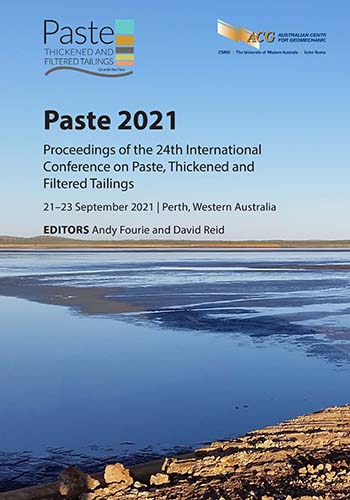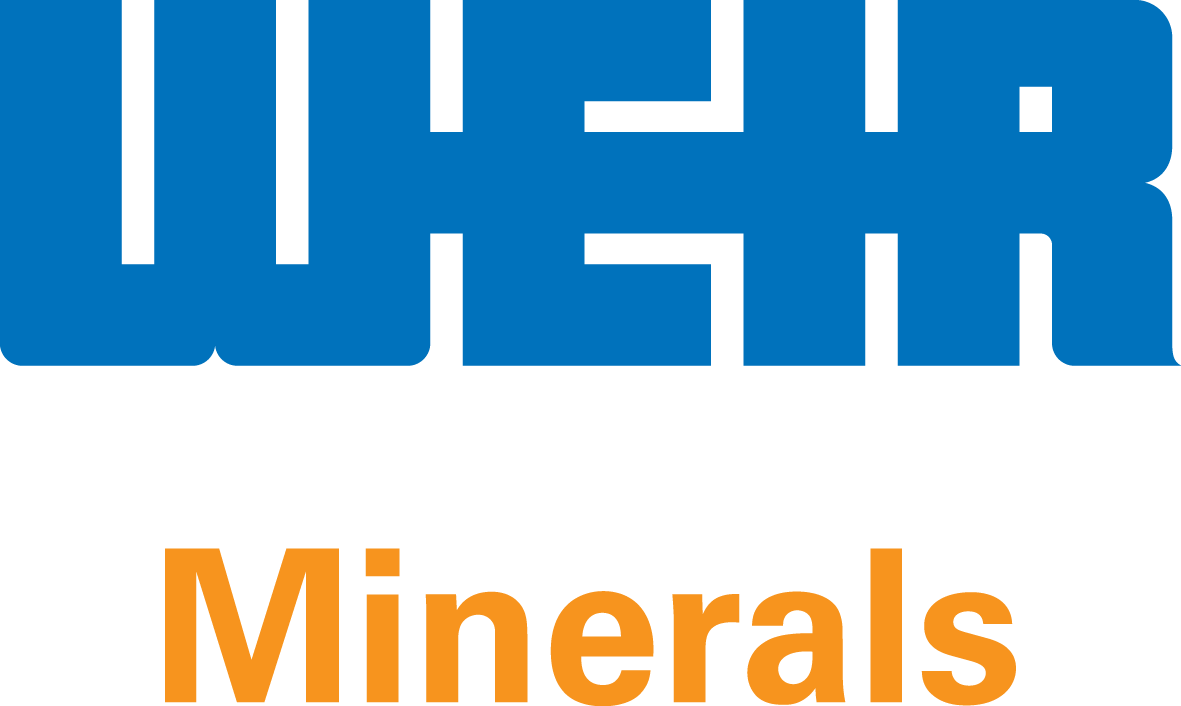The geomechanics of thickened and paste tailings

|
Authors: Seddon, KD |
DOI https://doi.org/10.36487/ACG_repo/2115_18
Cite As:
Seddon, KD 2021, 'The geomechanics of thickened and paste tailings', in AB Fourie & D Reid (eds), Paste 2021: Proceedings of the 24th International Conference on Paste, Thickened and Filtered Tailings, Australian Centre for Geomechanics, Perth, pp. 217-230, https://doi.org/10.36487/ACG_repo/2115_18
Abstract:
The overall objective of thickened and paste tailings disposal has been stated many times: it is to thicken a tailings slurry to the point where it is non-segregating, and will beach to form a sloping, sub-aerial deposit. The advantages of this type of scheme have been stated to include higher density, higher strength (including avoidance of a slimes pond), improved seismic resistance, and better closure and rehabilitation prospects (including lower compressibility). The aim of this paper is to show how these outcomes are a product of the interaction of fundamental tailings properties, site management practices, and climatic conditions of the site. A typical set of test results is presented and discussed in the context of unsaturated soil mechanics. The absence of segregation in thickened and paste tailings is an important factor, but it is often overlooked. The paper addresses the influence of evaporative drying on the sub-aerial beach. The induced suction stresses, combined with compressibility (consolidation) largely influence the rate and extent of density and strength gain that is attributable to the thickened discharge method. Finally, the influence of overall site management practices (e.g. filling rate), together with climatic conditions, are discussed to illustrate how these may act as constraints on the potential to achieve optimum results.
Keywords: thickened tailings, soil suction, density, compressibility, strength
References:
ASTM International 2011, Committee D-18 on Soil and Rock, Standard Practice for Classification of Soils for Engineering Purposes (Unified Soil Classification System) (ASTM D2487 – 17 e1), ASTM International, West Conshohocken.
Been, K & Sills, GC 1981, ‘Self-weight consolidation of soft soils: an experimental and theoretical study’, Géotechnique, vol. 31, no. 4, pp. 519–535.
Boulanger, RW & Idriss, IM 2015, ‘CPT-based liquefaction triggering procedure’, Journal of Geotechnical and Geoenvironmental Engineering, vol. 142, no. 2.
ICOLD 2019, Bulletin 181 Tailings Dam Design, Technology Update.
Jefferies, M & Been, K 2015, Soil Liquefaction: A Critical State Approach, CRC Press, Boca Raton.
Khalili, N & Khabbaz, MH 1998, ‘A unique relationship of chi for the determination of the shear strength of unsaturated soils’, Géotechnique, vol. 48, no. 5.
Mbonimpa, M, Aubertin, M, Maqsoud, A & Bussière, B 2006, ‘Predictive model for the water retention curve of deformable clayey soils’, Journal of Geotechnical and Geoenvironmental Engineering, vol. 132, no. 9.
Pirouz, B, Kavianpour, MR & Williams, MPA 2008, ‘Sheared and un-sheared segregation and settling behaviour of fine sand particles in hyperconcentrated homogenous sand-water mixture flows’, Journal of Hydraulic Research, vol. 46, no. 1, pp. 105‒111.
Reid, D & Fourie, AB 2015, ‘The influence of slurry density on in-situ density’, in RJ Jewell and AB Fourie (eds), Paste 2015: Proceedings of the 18th International Seminar on Paste and Thickened Tailings, Perth, pp. 95–106,
1504_05_Reid
Robinsky, EI 1999, Thickened Tailings Disposal in the Mining Industry, EI Robinsky Associates, Toronto.
Seddon, KD 2018, ‘Segregating tailings: effects on density and water retention’, Proceedings of the Mine Waste and Tailings Conference 2018, The Australasian Institute of Mining and Metallurgy, Melbourne.
Seddon, KD & Albee, JK 2015, ‘Characterisation of a thickened tailings beach’, in RJ Jewell and AB Fourie (eds), Paste 2015: Proceedings of the 18th International Seminar on Paste and Thickened Tailings, Australian Centre for Geomechanics, Perth, pp. 493–504,
Shuttle, DA & Cunning, J 2007, ‘Liquefaction potential of silts from CPTu’, Canadian Geotechnical Journal, vol. 44, no. 1, pp. 1–19.
Williams, MPA, Seddon, KD & Fitton, TG 2008, ‘Surface disposal of paste and thickened tailings — a brief history and current confronting Issues’, in R Jewell, AB Fourie, P Slatter & A Paterson (eds), Paste 2008: Proceedings of the Eleventh International Seminar on Paste and Thickened Tailings, Australian Centre for Geomechanics, Perth, pp. 143–164,
ACG_repo/863_14
Zhang, F, Wilson, W & Fredlund, DG 2018, ‘Permeability function for oil sands undergoing volume change during drying’, Canadian Geotechnical Journal, vol. 55, pp. 191–207.
© Copyright 2025, Australian Centre for Geomechanics (ACG), The University of Western Australia. All rights reserved.
View copyright/legal information
Please direct any queries or error reports to repository-acg@uwa.edu.au
View copyright/legal information
Please direct any queries or error reports to repository-acg@uwa.edu.au





